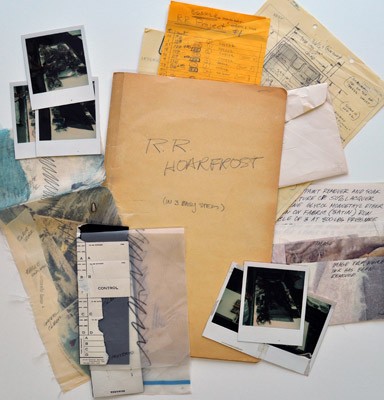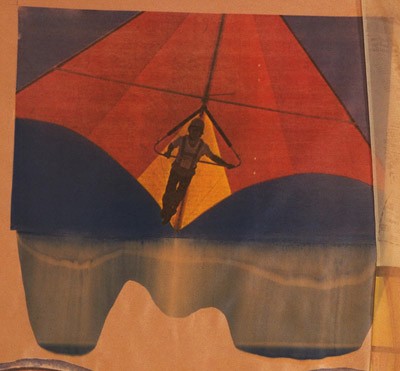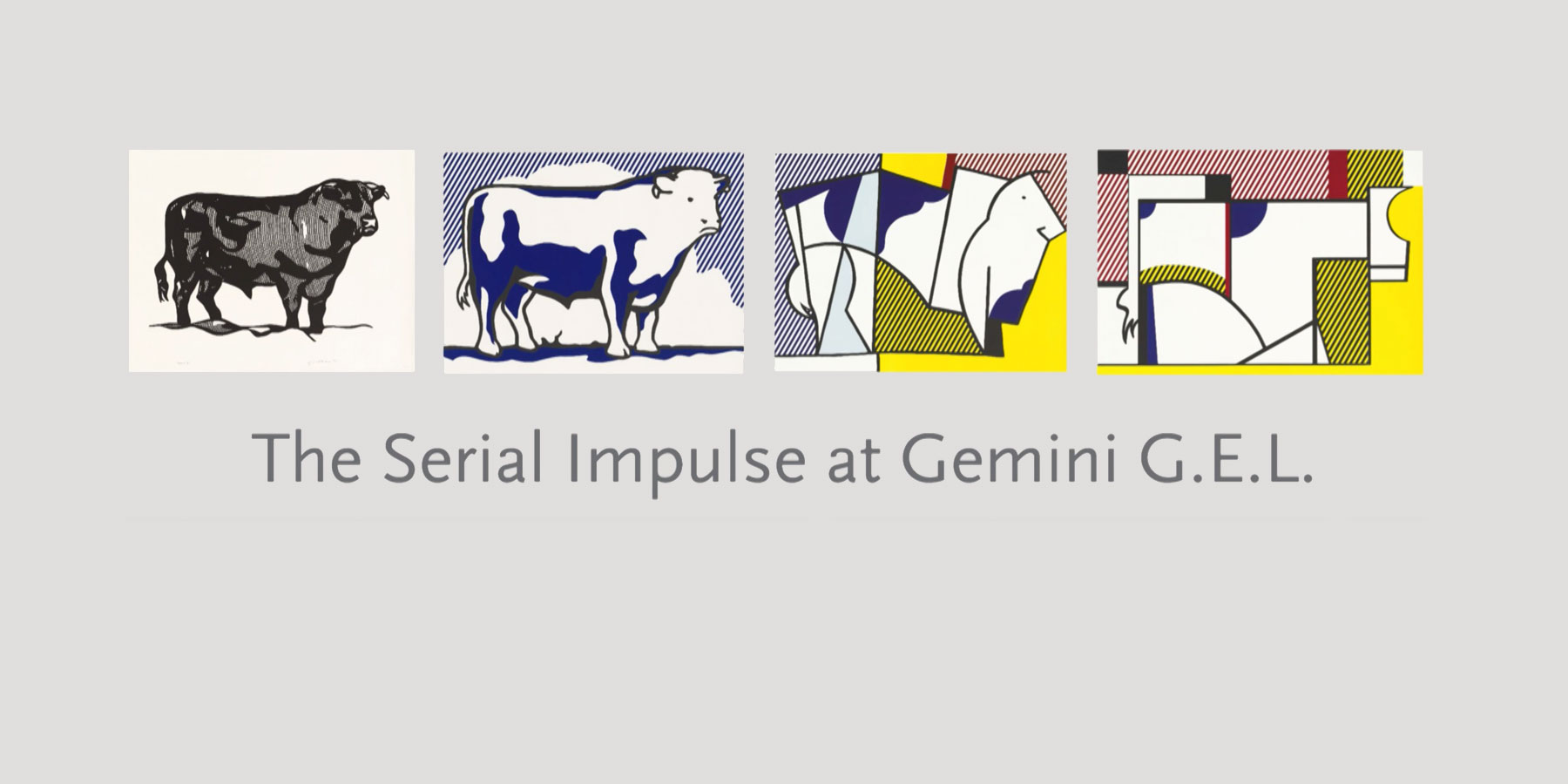Once a proof is completed and approved by the artist, it is the printmaker’s job to replicate it exactly—the angle of a twisted newspaper, the bleed of an over-saturated image, the particular drape of a paper bag-weighted fabric—for the edition. Though Rauschenberg welcomed subtle variations from one impression to the next, the Gemini printers developed several strategies for matching the artist-approved proof. Screenprinting, for example, was used to mimic chance occurrences the artist embraced during proofing, such as the position of a manufacturer’s stamp or selvedge marking on a piece of fabric, or the blurring of a solvent-soaked image. The hang glider on the left panel of Plus Fours, for example, bled under the pressure of the press, and rather than rely on another chance bleed while producing the edition, printers recreated the bleed with screenprinting. During the three-month period of producing the edition, new chemical mixes were devised and recalibrated to coax ink from aging newsprint. Some editions were abbreviated as fabric supplies ran short. For example, Scrape is from an edition of 32, but the edition of Plus Fours is only 28.
From the Printer's Perspective: Rauschenberg's Hoarfrost Editions

A folder—inscribed “R.R. Hoarfrost (in 3 easy steps)”—containing working materials and printers’ notes related to the production of Hoarfrost Editions.

Robert Rauschenberg, Plus Fours (detail), 1974, offset lithograph and screenprint transferred to collage of silk satin and silk chiffon, Gift of Gemini G.E.L. and the Artist, 1991. © Robert Rauschenberg and Gemini G.E.L./ VAGA, New York, NY (click on detail for full image)
In order to recreate each print for the edition, some printers kept copious notes. Others labeled and annotated Polaroid photographs snapped during proofing, or sketched detailed diagrams mapping the layout of each layer of printed fabric.
View the slideshow below for a selection of Polariod photographs, diagrams, and related fabric tests kept by the printers during production of the Hoarfrost Editions. These materials are now part of the Gemini Archive at the National Gallery of Art.
Banner image: Taped Polariods, Gemini Archive at the National Gallery












